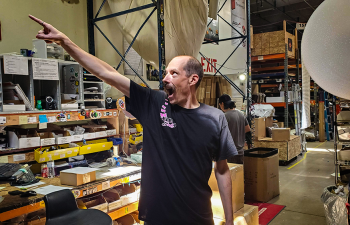Shop owners and retail workers are responsible for ensuring that their tobacco and nicotine-infused products are sold only to adult clientele. Without the proper measures in place, store owners and retail workers can be held liable should they accidentally or purposefully sell these products to minors.
There are several risks when minors purchase age-restricted products, including legal and financial consequences. It can also pose a risk to the store’s reputation and, more importantly, to the youth’s health and well-being.
Those working around tobacco and nicotine products must understand the consequences and follow the best practices for preventing minors from purchasing these items. They must remain responsible and implement the correct procedures to protect their business, themselves, and their customers.
Selling Tobacco: Legal Obligations for Retailers
The age restriction on purchasing tobacco and nicotine products varies from state to state and country to country. In the U.S., most states require individuals to be 18 years or older to purchase these products. In some cases, the age is 21.
These restrictions are laws set forth at both the federal and state levels. Violating these laws can open businesses and workers up to a myriad of legal penalties, including fines ranging from hundreds to thousands of dollars, suspension or revocation of business license, and, in some cases, criminal charges with the potential for imprisonment.
Measures to Prevent the Sale of Tobacco Products to Minors
There are several measures that retail workers and shop owners can implement to ensure that minors cannot purchase tobacco and nicotine products. These measures can range from using age verification software to training employees.
It is essential to prioritize these practices to ensure legal compliance, maintain a positive reputation and customer loyalty, and uphold health, safety, and personal ethical standards.
Implementing Age Verification Systems
The safest measure that store owners can take to prevent minors from purchasing adult products is to implement age verification systems. These systems can come in many forms and may include the following:
- ID scanning systems: ID scanning systems may use scanners or readers to read government-issued IDs, such as driver’s license and passport, to determine the age of the customer in question. ID scanners are a popular choice, but they can be expensive to purchase and maintain and may also lead to longer wait times for customers during peak business hours.
- Age verification apps: Age verification apps are digital tools that help workers confirm a customer’s age by letting the customer input their date of birth and other personal information through phone apps. These apps are quick, easy to use, and accessible to anyone with an internet connection. They’re also considered less intrusive than traditional methods. But they also have drawbacks — they tend to be less reliable than physical ID scanning and may be more vulnerable to cyberattacks.
- Electronic age verification solutions: An electronic age verification software is easy to use and can be integrated into existing systems. The software can scan government-issued IDs or use facial recognition to verify a customer’s identity. Still, this method can be costly and may come with accuracy errors and privacy risks.
Identification Checking Procedures
Checking government-issued IDs is a safe and easy method to confirm a customer’s age. However, some customers may produce fake IDs, so store owners and employees must know how to differentiate between real and fake IDs. While it can sometimes be difficult to tell the difference, there are a few things that you can look out for, including:
- Security features: Government-issued IDs often have security features that are difficult to replicate, including holographic overlays and special watermarks.
- Physical characteristics: Certain physical characteristics may also be harder to replicate, such as the thickness and feel of the cardstock.
Consistency: Real IDs will be consistent in their font, size, and placement of information, whereas fake IDs may have discrepancies. - Customer behavior: Customers who use fake IDs may appear nervous or hesitant.
Investing in Employee Training
Employees should be trained when brought in and anytime there are updates to the selling of age-restricted items. Some common areas to focus on in employee training include:
- Ensuring that employees understand the importance of preventing underage sales
- Identifying fake IDs and tampered age verification methods
Implementing procedures for handling refused sales - Training how to use age verification systems and apps
Employee training should be a top priority for anyone in the business of selling age-restricted items. Employees should also be tasked with displaying age restrictions and penalties for violations. It is the responsibility of employers to create a store culture that discourages underage sales.
Conclusion
When owning or working in a store selling age-restricted products such as tobacco, you must understand how important it is to remain legally compliant. To stay compliant in this field, store owners and retail workers must do their part to ensure minors cannot purchase adult products by implementing various methods. These methods should include strict age verification procedures, thorough checking of government-issued ID’s, and appropriate employee training.










